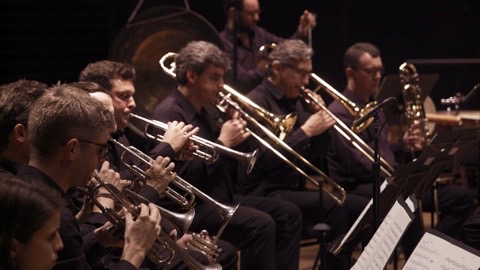

It also exerted extraordinary influence on later composers, as the slow movements of Schubert's "Great" C-major Symphony and E-flat Piano Trio, Mendelssohn's "Italian" Symphony, Berlioz's Harold in Italy, and other works attest.Īfter its premiere, the Seventh Symphony was repeated three times in the following 10 weeks at one of the performances the "applause rose to the point of ecstasy," according to a newspaper account. An example is the second movement of his Seventh Symphony, a piece that was often performed separately from the complete Symphony and that may have been Beethoven's most popular orchestral composition. These pieces tend to be much less familiar today than when they were the favorites of his contemporaries: Wellington's Victory, the oratorio Christ on the Mount of Olives, the Septet, and his best-loved song, "Adelaide." Occasionally, Beethoven wrote something that was immediately recognized as both artistically great and hugely popular. But there were also works that were truly popular or at least aimed to be so. Many of what are today considered Beethoven's most highly esteemed compositions, especially ones from late in his career, were initially received with a complex mixture of admiration, bewilderment, and resistance. Beethoven's imposing historical stature can obscure our appreciation of how in his own time he sought to juggle fame, popularity, and artistic innovations. Rossini was emerging as a new force in the musical world, and his prominence extended far beyond the opera house arrangements for every conceivable combination of instruments took his music into home, café, and concert hall. That did not mean, however, that he was the most popular, published, or often performed. In spite of the symphony's popularity, Beethoven was not the most performed or most published composer of the time, and he competed for prestige with emerging composer Rossini.īy the mid 1810s Beethoven was recognized far and wide as the preeminent living composer. The second movement of the Seventh often is performed separately from the complete symphony, and might have been one of Beethoven's most popular compositions. The celebratory symphony, dedicated to both Count Moritz von Fries and Russian Empress Elisabeth Aleksiev, was performed three times in 10 weeks following its premiere. Viennese audiences, miserable from Napoleon's 18 occupations of Vienna and hopefully awaiting a victory over him, embraced the symphony's energy and beauty.

It was one of Beethoven's most successful concerts. These scales repeat, gradually becoming louder and more extravagant.The Seventh Symphony's premiere concert was performed to benefit the soldiers wounded a few months earlier in the battle of Hanau. After eight bars, the piece has briefly entered the key of F major already and is now accompanied by scales of two octaves which begin softly, similar to the way a person creeps up and down a staircase.
#BEETHOVEN 7TH SYMPHONY 1ST MOVEMENT IN MOVIES FULL#
The Introduction begins with a short A chord from the full orchestra.

7 is noted for its long ascending scales as well as its applied dominants relative to its C major and F major modulations. The second movement also includes modulations (originally in A minor with switches to A major) and the third movement is in F major. The first movement is in A major, with repeated modulations between C major and F major. The score includes two flutes, two oboes, two clarinets, two bassoons, two horns, two trumpets, two drums (in which are tuned to A and E, except in the scherzo where they are in F and A), and basses. Presto – Assai meno presto (trio), and 4. The piece is known for its rhythmic devices (such as dotted rhythm and repeated rhythmic figures) and the celebratory emotion to it, in which makes listeners want to dance and burst into blissful joy. It’s victorious, moving, energetic, powerful, and full of heart. The Seventh Symphony had been dedicated to both Count Moritz von Fries and Russian Empress Elisabeth …show more content… The Seventh Symphony itself can and has been described in many words and fashions. During the time of the symphony’s premiere, Vienna was still distressed due to being taken over by Napoleon in 18 and yearning for victory the audience at the premiere seemed to have loved the energy and beauty of the piece. It was performed three times in ten weeks following its premiere. The seventh of Beethoven’s nine symphonies, its premiere concert (December 1813 in Vienna) was performed at a charity concert in order to benefit the soldiers who had been wounded a few months prior in the battle of Hanau. 92), completed in 1812, might have been one of Ludwig Van Beethoven’s most popular pieces.


 0 kommentar(er)
0 kommentar(er)
